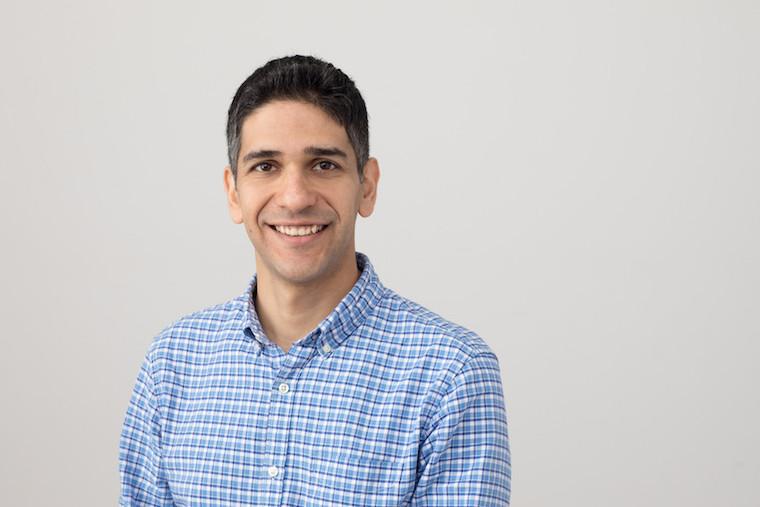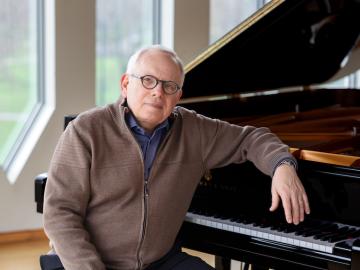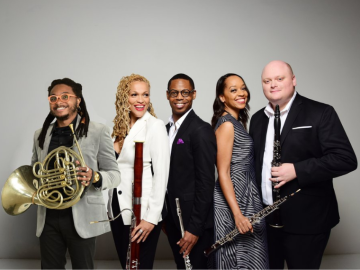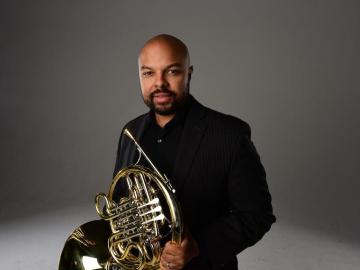An Introduction to Islamic Art History: But First, Coffee
October 22, 2018
Erin Ulrich ’18

Assistant Professor of Islamic Art History Farshid Emami is introducing his students to Islamic art cross-culturally in an unexpected way—through coffeehouses.
Assistant Professor of Islamic Art History Farshid Emami, who is in his second year of teaching at Oberlin, uses the versatility of his academic training to introduce students to thinking on a global scale. Emami’s teaching is as much reflective of his training and practice as an architect as his interest in a broad range of artistic mediums—such as ceramics, manuscript illustrations, carpets and other aspects of material culture. Studying art history, he says, “is not just about paintings on walls.”
Emami’s latest project consists of expanding his PhD dissertation into a book manuscript, which focuses on urban architecture through the analytical lens of city experience. He says this approach is “rooted in the spaces of everyday life,” focused specifically on city experiences in Isfahan, the capital of the Safavid dynasty in the 17th century.
While the intersections of Emami’s research—coffeehouses, art history, and architecture—may seem disparate, they come together through a principle of architecture: coordination. “When I produce a written document like a scholarly article,” Emami says, “I still look at it with the view of an architect. The way you present an argument is that you lay out the evidence, draw on conclusions. Sort of coordinating different types of evidence. It’s not very different from designing a work of architecture.”
Emami’s integrated and cross-disciplinary approach to studying Islamic art brings people’s experiences to the forefront of what have traditionally been monolithic historical accounts of Islamic art and architecture.
“Previous studies of urban planning and architecture in Safavid Iran mostly look at the city through the lens of rulers,” Emami says. “How works of architecture represented the worldviews, ideologies, and intentions of the ruling elites. I’m taking a different look by emphasizing human experience of the city—how the city was experienced not by the royal, ruling elite, but in terms of everyday life.”
So how do coffeehouses fit into Emami’s project to expand historical narratives around Islamic art and architecture? For him, it means giving credence to the role of the embodied experience of architecture as part of city life.
Emami says, “I pay more attention to spaces that are less monumental, but still very important and integral to everyday life. That’s the concept of city experiences rooted in the spaces of everyday life—like coffeehouses. My class takes coffee as its starting point to tell a global story and study material and architectural history beyond the limits of one culture.”
Emami’s research, part of which has been published in an essay titled "Coffeehouses, Urban Spaces, and the Formation of a Public Sphere in Safavid Isfahan" measures the bearing of architecture in the Islamic world through the impact it has had on people’s lived experiences, not just through its semblance to the ideologies of the ruling elite.
Emami is teaching both Approaches to Islamic Art and Arabic and Persian Book Arts this fall semester—courses he says are also a response to his students. “I get a lot of energy from my students, because they are always engaged,” he says. “They want to learn and broaden their horizons.” He will be teaching Approaches to Islamic Art and Architecture, Coffeehouses and Teahouses: A Global History, and Architecture, Art, and Literature in Islamic Culture this spring.
When asked what the best part about working with Oberlin students has been so far, Emami responds almost immediately. “There’s a culture of being hardworking and enthusiastic at Oberlin. I feel like we are all learning in class.”
Tags:
You may also like…
Peter Takács—A Half-Century Celebrated
May 4, 2024
This spring marks the official conclusion of Takács’ tenure, after an incredible 48 years of teaching. Many of his former students from around the world are set to convene for a celebratory concert in Warner Concert Hall on May 12
Oberlin Presents Grammy-Winning Imani Winds in Concert
February 28, 2024
When flutist Brandon Patrick George ’08 attended Imani Winds’ Artist Recital Series performance back in 2007, he never imagined that he would one day sit in the flute chair. “Being...
David Byrd-Marrow Appointed Horn Faculty at Oberlin Conservatory
February 7, 2024
Versatile American horn player David Byrd-Marrow has been appointed to the tenure-track horn professor position at Oberlin Conservatory. He brings an expansive range of experience and repertoire to the role.


